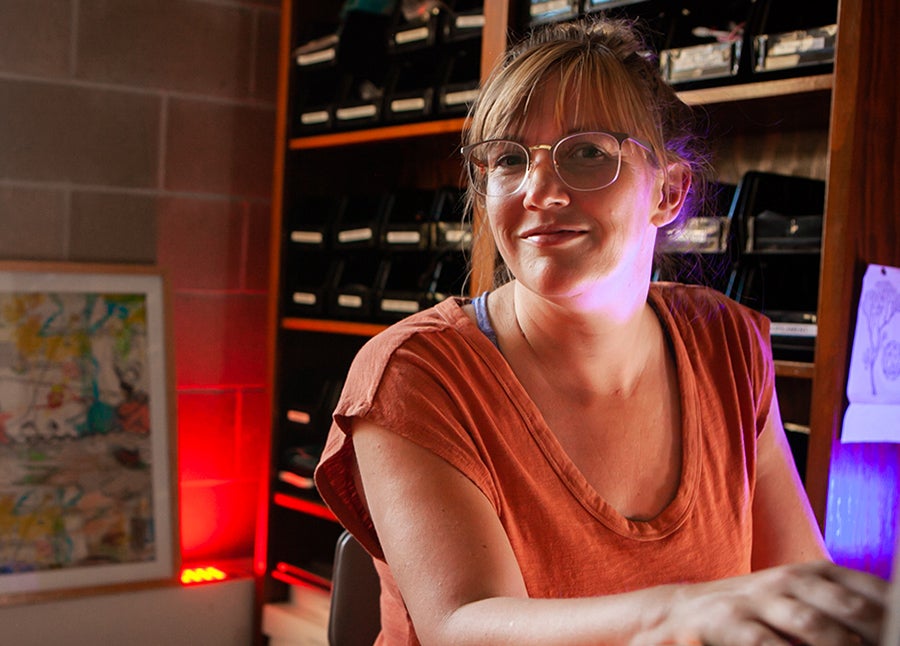“We’re just beginning to understand and quantify the amount of biomass in the twilight zone, how exploitable is it, how vulnerable is it, will it become a resource that humans may use for protein or other reasons.”

Melissa Omand
—Assistant Professor of Oceanography
Melissa Omand studies a region of the ocean that she calls the twilight zone—a dimly-lit layer between 100 and 1,000 feet below the surface where a huge variety of lifeforms spend much of their lives and which is mostly inaccessible to divers. Her research examines the movement of organic carbon into and through this little-explored area.
“We’re just beginning to understand and quantify the amount of biomass in the twilight zone, how exploitable is it, how vulnerable is it, will it become a resource that humans may use for protein or other reasons,” Omand said. “That underpins some of the reasons why it’s important to study this region.”
To gain insight into these questions requires a variety of imaging and sensor technologies, most of which Omand designs and constructs from scratch in her lab. The tank in the new Ocean Robotics Laboratory will make her work so much more efficient by allowing her to conduct detailed testing of her instruments before going to sea. One instrument, for instance, is dropped off a ship and must sink to a precise depth, which requires characterizing its exact density before putting it to use.
“Being able to test new instruments is unbelievably crucial,” said Omand. “I’ve come to appreciate the need to do as much in-house, pre-cruise testing and characterization as I can, and having a facility like the Ocean Robotics Laboratory is necessary for that.”
